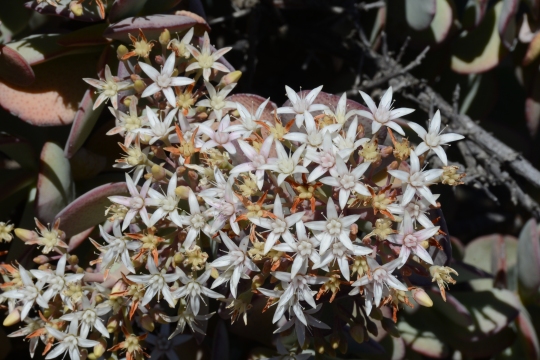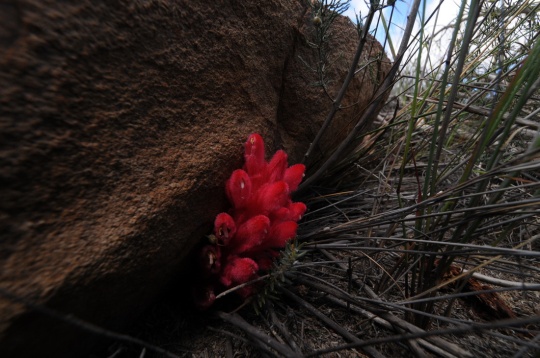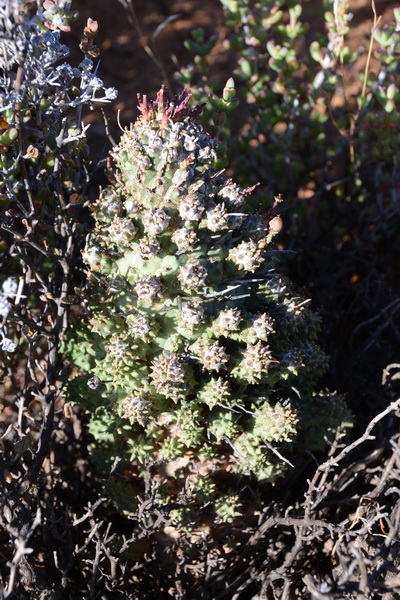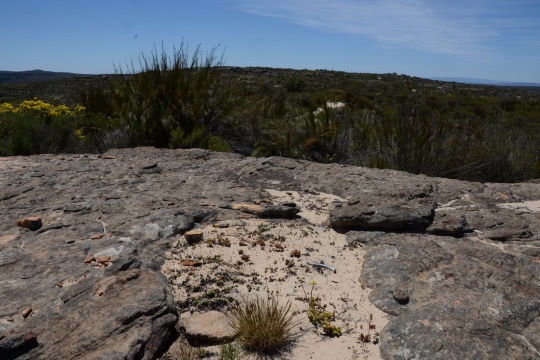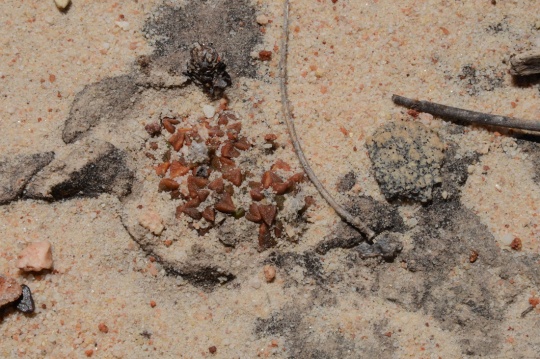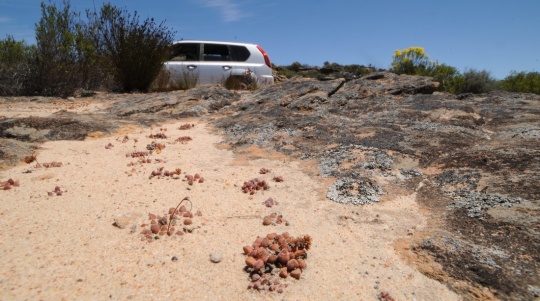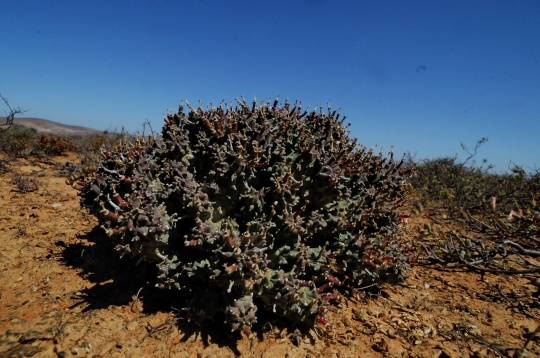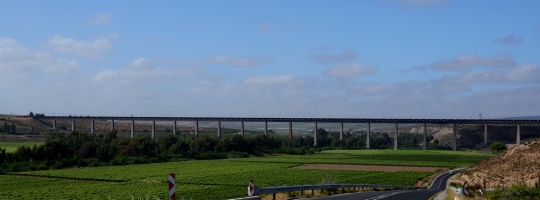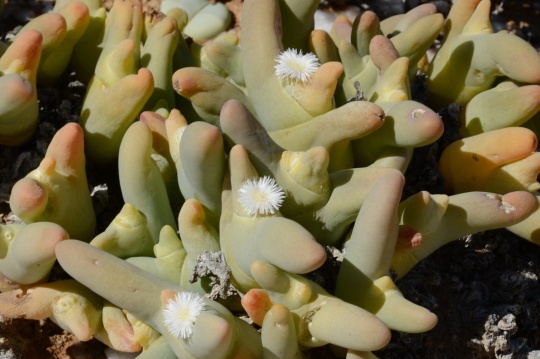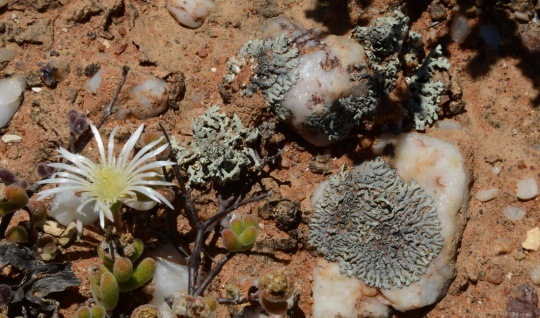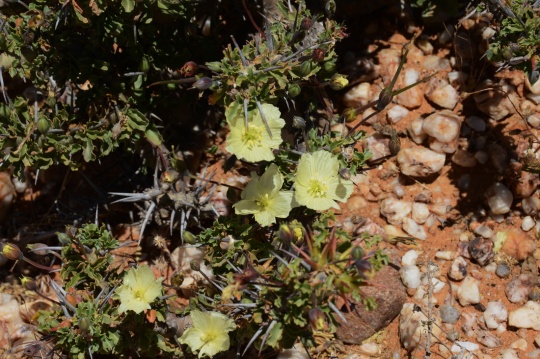Wednesday, 31 October 2012 – around Laingsburg (to the south)
After seeing Euphorbia multiceps last night in poor light, Eunice seemed a bit concerned about our promise to go back and see it in better light later on the trip. Today the light was fine, so why were we heading off elsewhere? It was of course perfectly possible that these plants grew in more than one space….
Instead, after our usual stop at the local Spar shop we headed south from Laingsburg. These Spar shops intrigued me. Growing up in Netherlands I was familiar with Spar grocery shops near every address that we had lived. When we moved to England, we would occasionally see one, but here in South Africa, they were everywhere! Curious and now with Google to answer most questions you can think of, I learned that ‘From its beginnings in the Netherlands in the 1930s, SPAR began its global expansion by introducing SPAR to Belgium in 1947, and expanding rapidly in Europe during the 1950s. Today SPAR is the largest retail food store chain in the world, with 12,680 stores in 33 countries – total retail sales in 2008 of €27 billion came from operations in Europe, Africa, Asia, and Australia.’ Wow, that came as a surprise! Although I have lived in the UK since 1967, you can tell that I’m still Dutch, can’t you?
Anyway, I digress. When you push the edges of a large sheet of paper together, it is not unusual for it to fold into a number of ripples. Much the same seems to have happened in South Africa where it seems an invisible hand had pushed the earth’s crust north from the south pole, giving rise to a series of ‘ripples’, a series of low ranges and valleys, each worth exploring for their differences in flora. Heading south on the R323 we took a turn east on a track sign posted for the Floriskraaldam and found ourselves in just such a valley. We decided to mark places to stop on the way back as we drove to and then a few km past the dam for our first stop S2746. We crossed another fence and headed up the north-facing hillside (brief reminder to northern hemisphere readers – here in South Africa, a north-facing hillside had the brighter and warmer aspect, preferred by many plants). I was struck by how different and yet similar things were to say one week ago when we were looking around the Knersvlakte. There, plants seemed to be shutting down for the heat of summer while here nature seemed to be waking up and in flower. So what were the similarities and the differences? Aloe striata was here, in full flower with somewhat narrower leaves than the plants farther north (subsp. karasbergensis and komaggasensis) and much more abundant.
Crassula deltoidea had been cute miniatures in the north but here they were much larger shrubs, with some impressive trunks on display and also in full flower. Tylecodon wallichii was here looking much the same as in the north. In a few weeks time, as we were preparing to fly home, it was preparing to lose its leaves for a summers rest. New here was Crassula arborescens, looking spledid and also in full flower. And we were to be treated to many and varied Haworthia in weeks to come where as in the north we had only seen a few taxa. Here we saw H. spiralis and David showed me the difference in flowers compared to Astroloba foliolosa. One thing remains unchanged – the problem of selecting just one image for each stop today.
We were now slowly working our way back to the R323 and at S2747, for the sake of continuity, I could not resist this shot
but that means that I’d better show you another from here.
I’ll claim the honour for finding these Haworthias here, David found this particular individual hidden in the deep shade underneath this rock. My D600 took the picture without too many issues. Amazing. Naming wise, I’m told that the names of Haworthias change every time that a new journal is published somewhere in the world – there’s nothing like a bit of stability in taxonomy to encourage people to join the hobby – but I guess that’s not the purpose of the science. David tells me that if I use the name ‘Gigas’ in my talks, everyone in the audience will know which one I’ll mean.
We had been told that there was an interesting plant that grew along this track – I believe David had seen it on a previous visit. We stopped where an outcrop of very dark coloured rocks reached the track and found it (S2748)
It made a nice change from all those plants on the blinding white quartz of the Knersvlakte last week! These leaves here were a perfect match for the rocks that they grew in.
We got back to the R323 and headed back towards Lainbsburg, but as it was still early, we found another track, this time turning west. Again, we followed the track as far as time permitted and used this stop, S2749, as a turn around point. Here there was yet again something different:
The Pachypodium beat Haworthia lockwoodii, as presumably we should have warned of our visit so that the plants could have tidied themselves. Covered in dried up old leaves, they looked a mess – so no picture here!
We had earmarked the next stop, S2750, as we had driven up the track earlier, for the mass of the impressive stand of plants at the top of the hill. We still had time for a closer look and were not disappointed:
Time for one more stop, S2751,
[I write this as clocks around the world click down to midnight on 31 December 2012 and on to 1 January 2013, so it seems appropriate to wish regular readers the very best for 2013. Do come back to see what we did on the 1st – of November 2012 that is!
[ HAPPY NEW YEAR!!!
PK ]


